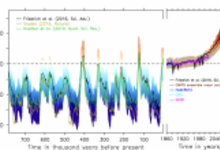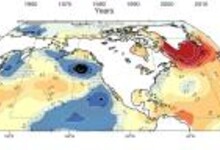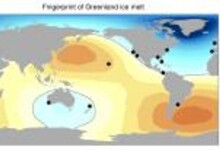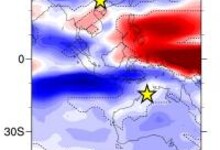Research Highlights
We aim to feature the latest research results from US scientists whose published paper features work that is sponsored by one or more sponsoring agency programs of US CLIVAR (NASA, NOAA, NSF, DOE, ONR). Check out the collection of research highlights below and sort by topic on the right. Interested in submitting an article for consideration? See our Research Highlight Submission Guidelines page for more information.
New research looking at glacial-interglacial climate variability during the last 784,000 years finds that Earth's climate sensitivity is strongly dependent on the climate background state with significantly larger values attained during warm phases. Because the Earth is currently in a warm state, the associated increased climate sensitivity has to be taken into account for future warming projections.
New research finds that changes in the strength of the Agulhas Current, since the early 1990s, has not increased, despite expectations based on rapidly warming sea surface temperatures. Instead, its flow has broadened due to more meanders and eddies.
Research shows that decadal shifts of subsurface Atlantic Water temperatures, along the North Atlantic Current, are associated with a progression of heat anomalies from the Gulf Stream region that coincide with sea surface temperatures extending to cover most of the subpolar and tropical North Atlantic; a signal similar to that of the Atlantic Multidecadal Oscillation.
New research shows that even the longest and highest-quality tide gauge data may underestimate the amount of global average sea level rise that occurred during the 20th century, due to their limited location.
A new study using a high-resolution stalagmite record from Australia with cave sites in southern China reveal a close coupling of monsoon rainfall on both continents, with numerous synchronous pluvial and drought periods, suggesting that the tropical rain belt expanded and contracted numerous times at multidecadal to centennial scales.





